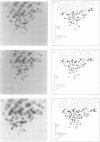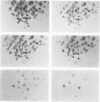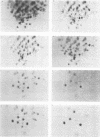Abstract
The site of recombination of a mink cell focus-inducing strain (Mo-MuLV83) derived from an ecotropic Moloney murine leukemia virus (Mo-MuLV) was mapped by fingerprint analysis of the large RNase T1-resistant oligonucleotides, employing a two-dimensional gel electrophoresis method. Mo-MuLV83, in contrast to the ecotropic Mo-MuLV, demonstrated a broadened host range, i.e., growth not only on mouse cells but also on mink cells, and recombination involved the env gene function. The genomic RNA of these two viruses shared 42 out of a total of 51 to 53 large T1 oligonucleotides (81%) and possessed a similar subunit size of 36S. Most of these T1 oligonucleotides were mapped in their relative order to the 3' polyadenylic acid end of the viral RNA molecules. There were 10 common oligonucleotides immediately next to the 3' termini. A cluster of 7 (in Mo-MuLV83) or 10 (in Mo-MuLV) unique T1 oligonucleotides were mapped next to the common sequences at the 3' end, and they all appeared concomitantly in a polyadenylic acid-containing RNA fraction with a sedimentation coefficient slightly larger than 18S. Therefore, the env gene of Mo-MuLV was situated at a location approximately 2,000 to 4,000 nucleotides from the 3' end of the genomic RNA, and the gene order of Mo-MuLV appeared to be similar to that of the more rigorously determined avian oncornaviruses. cDNA(SFFV) specific for the xenotropic sequences in the spleen focus-forming virus RNA hybridized to the cluster of unique oligonucleotides of Mo-MuLV83 RNA. This suggests that the loci of recombination involve the homologous env gene region of a xenotropic virus.
Full text
PDF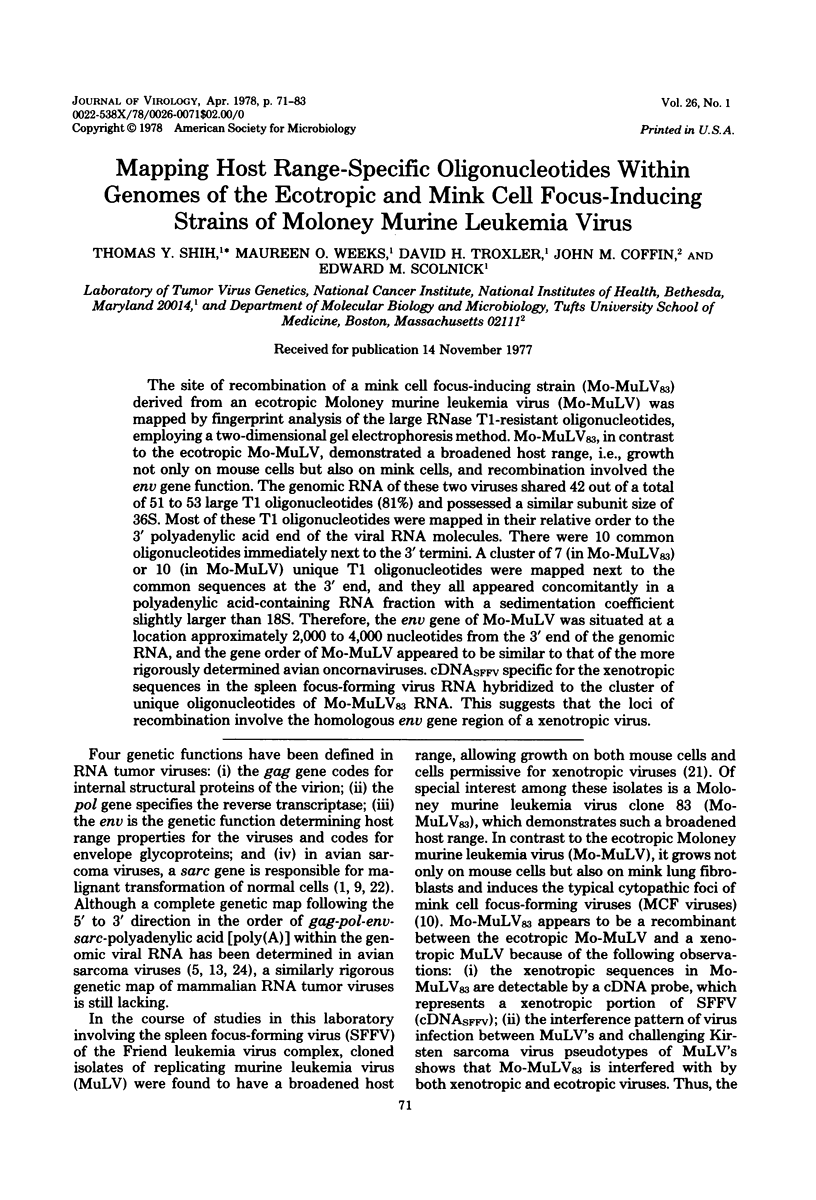
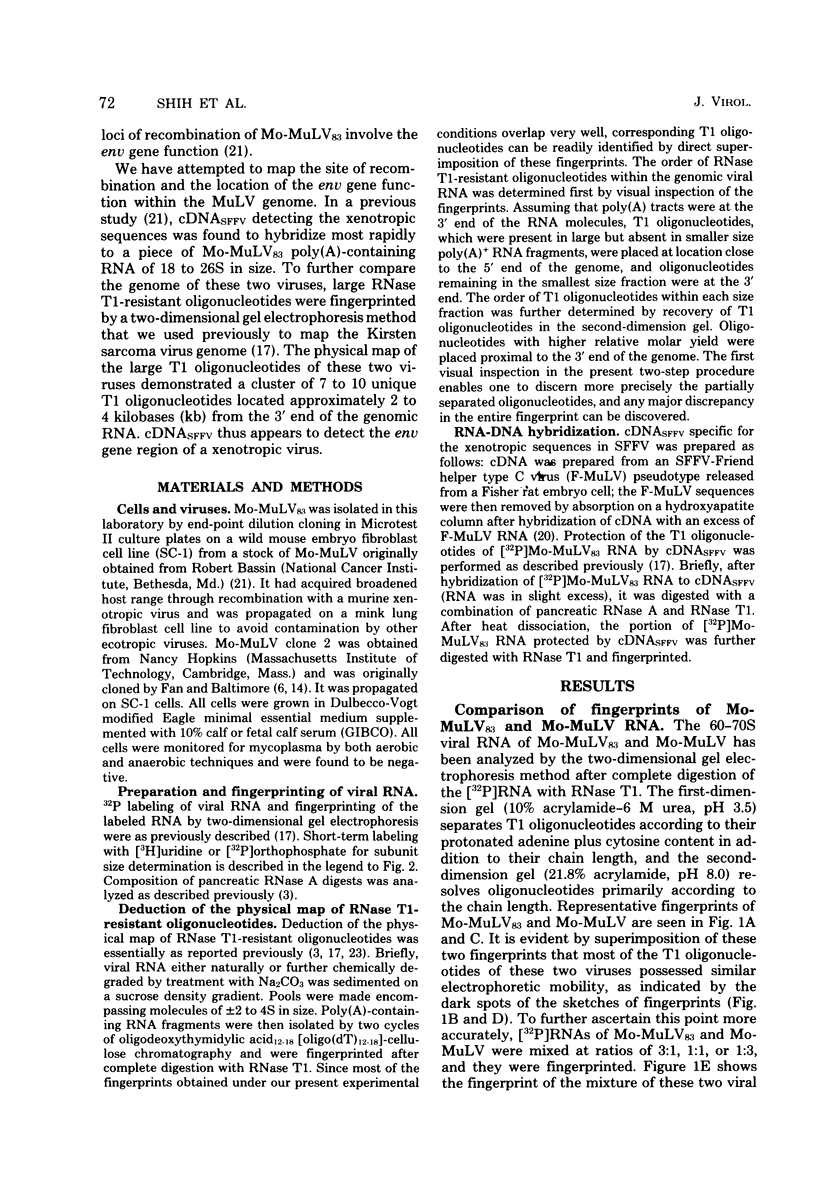
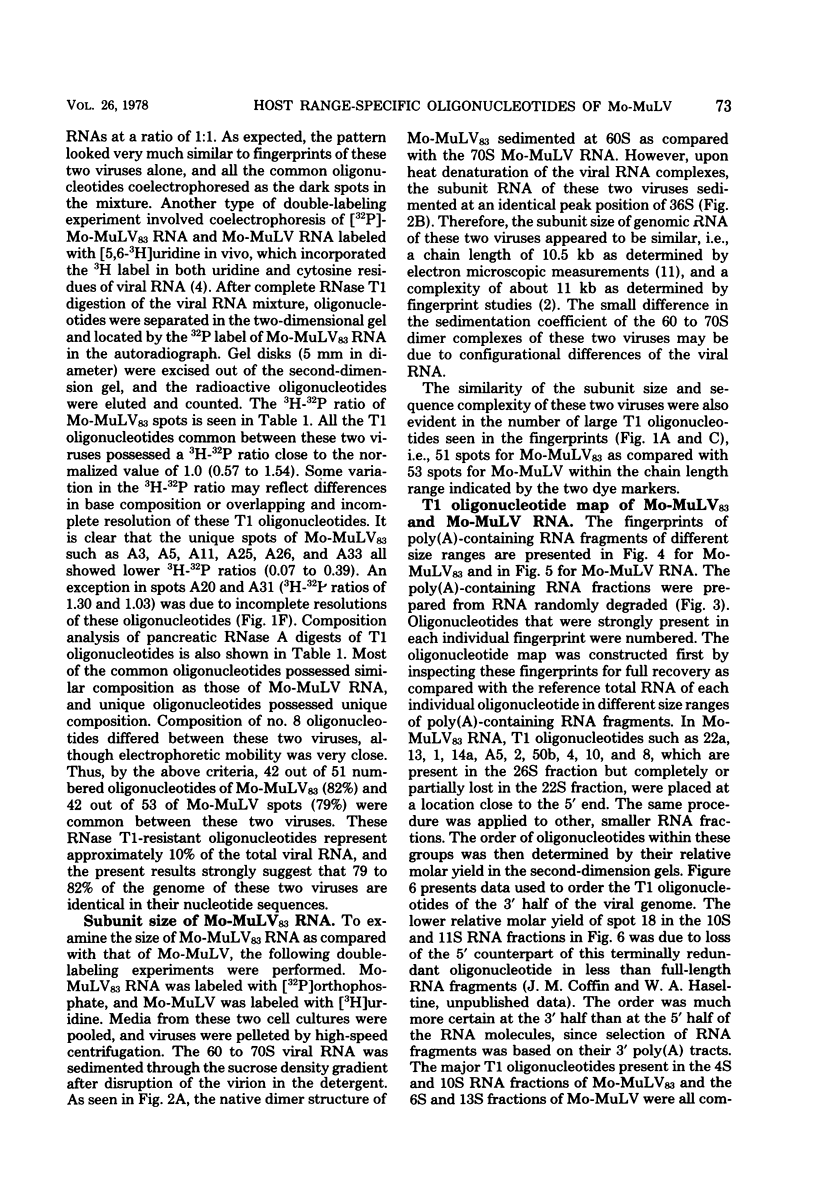
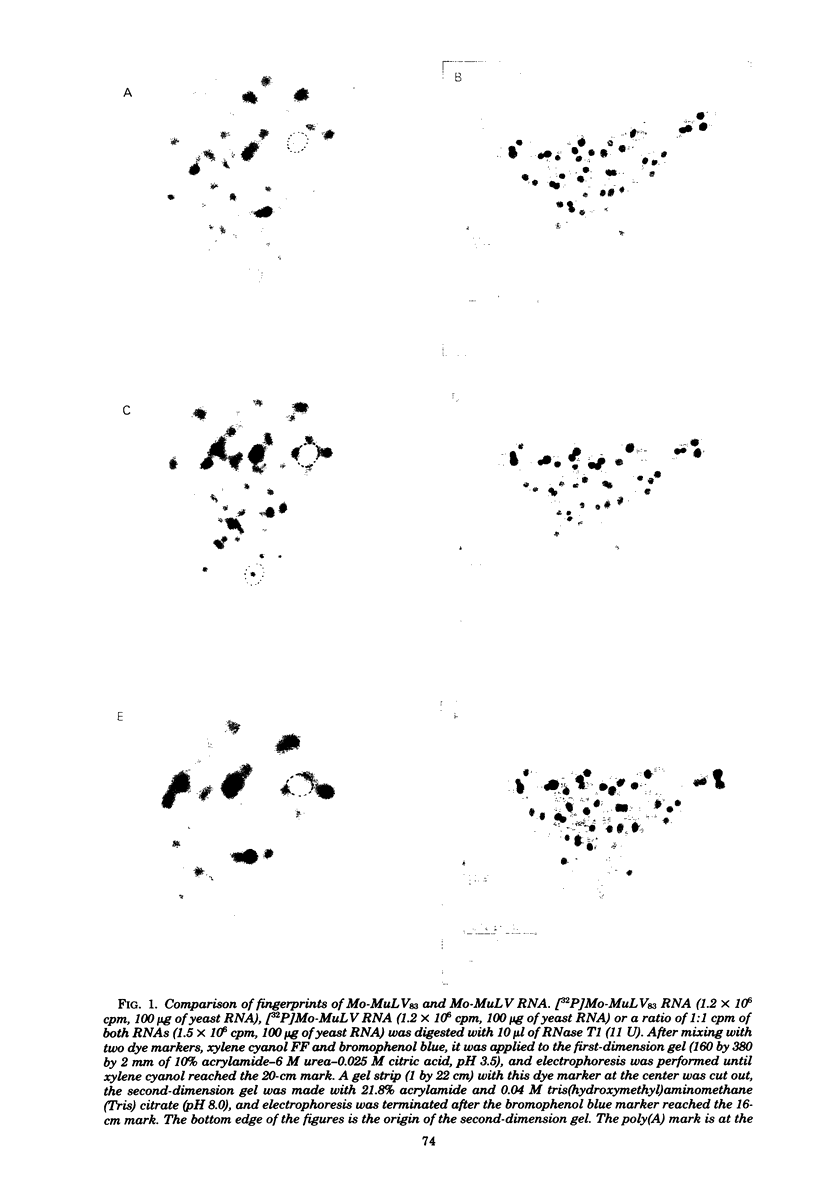
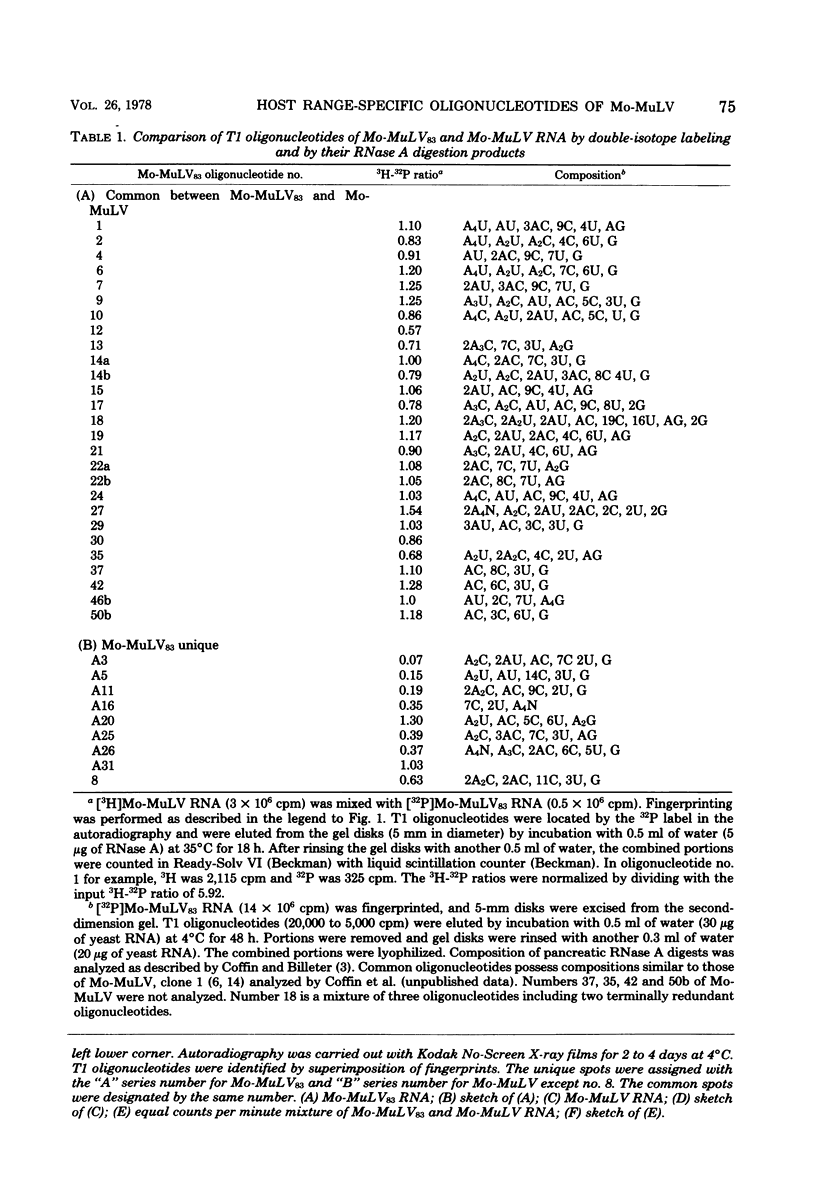
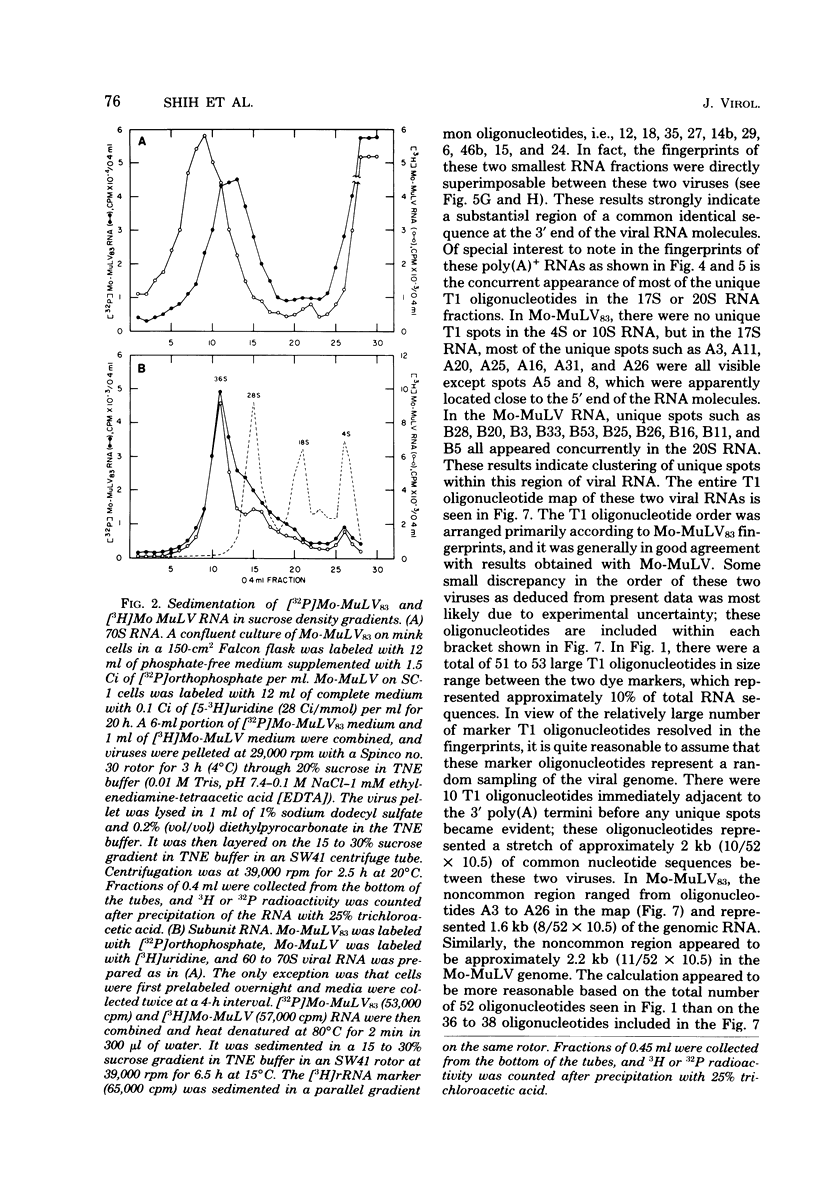
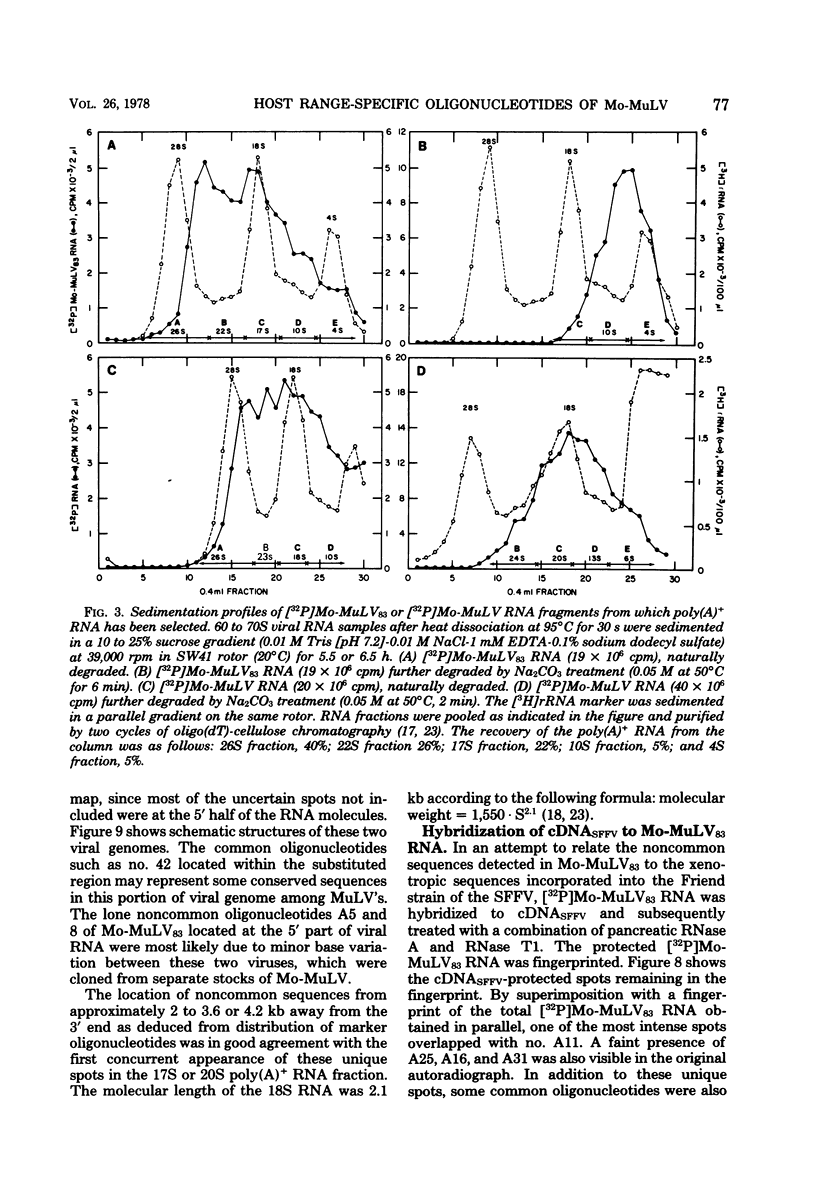
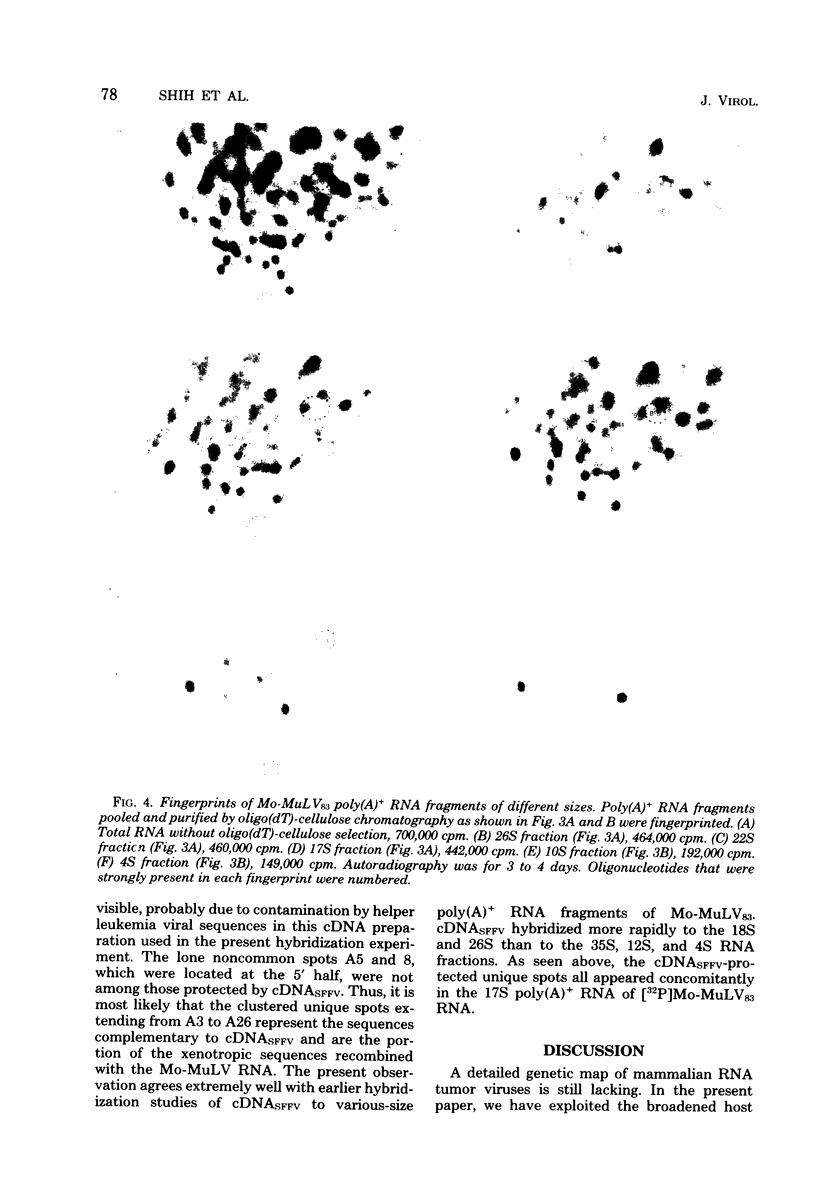
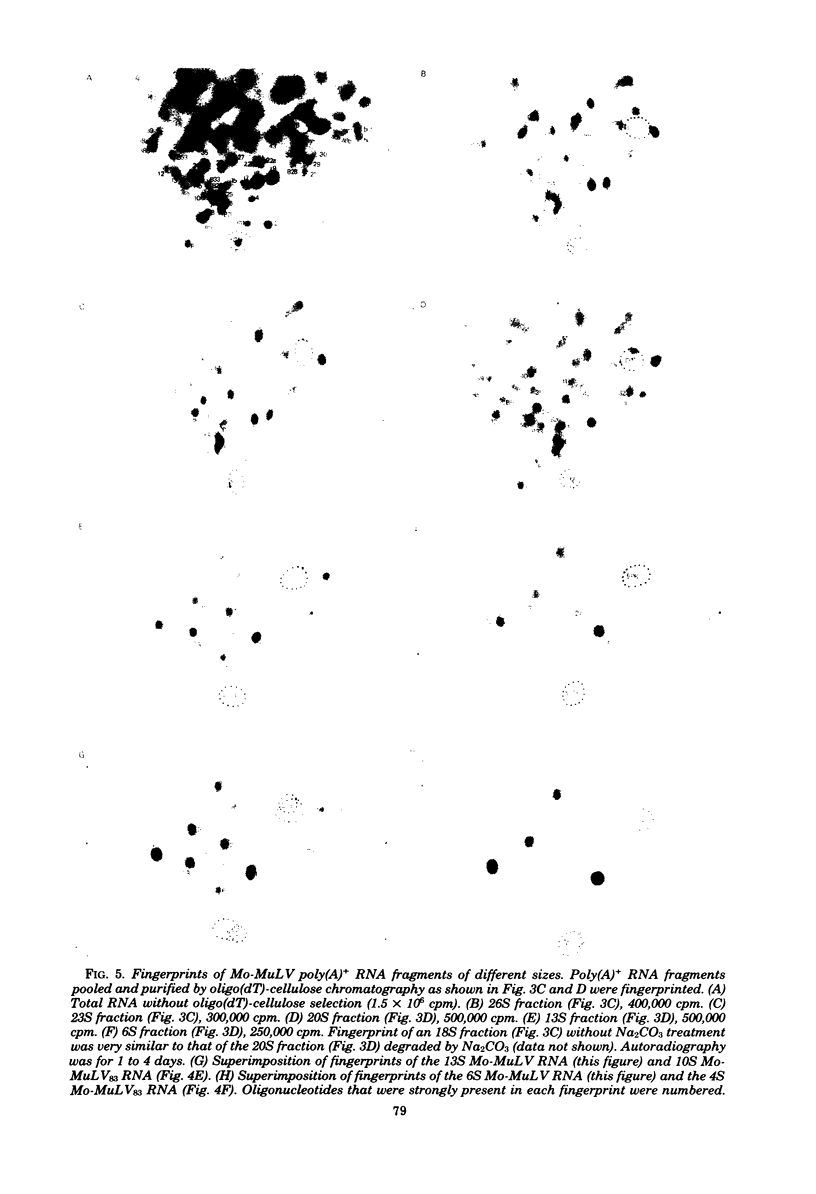
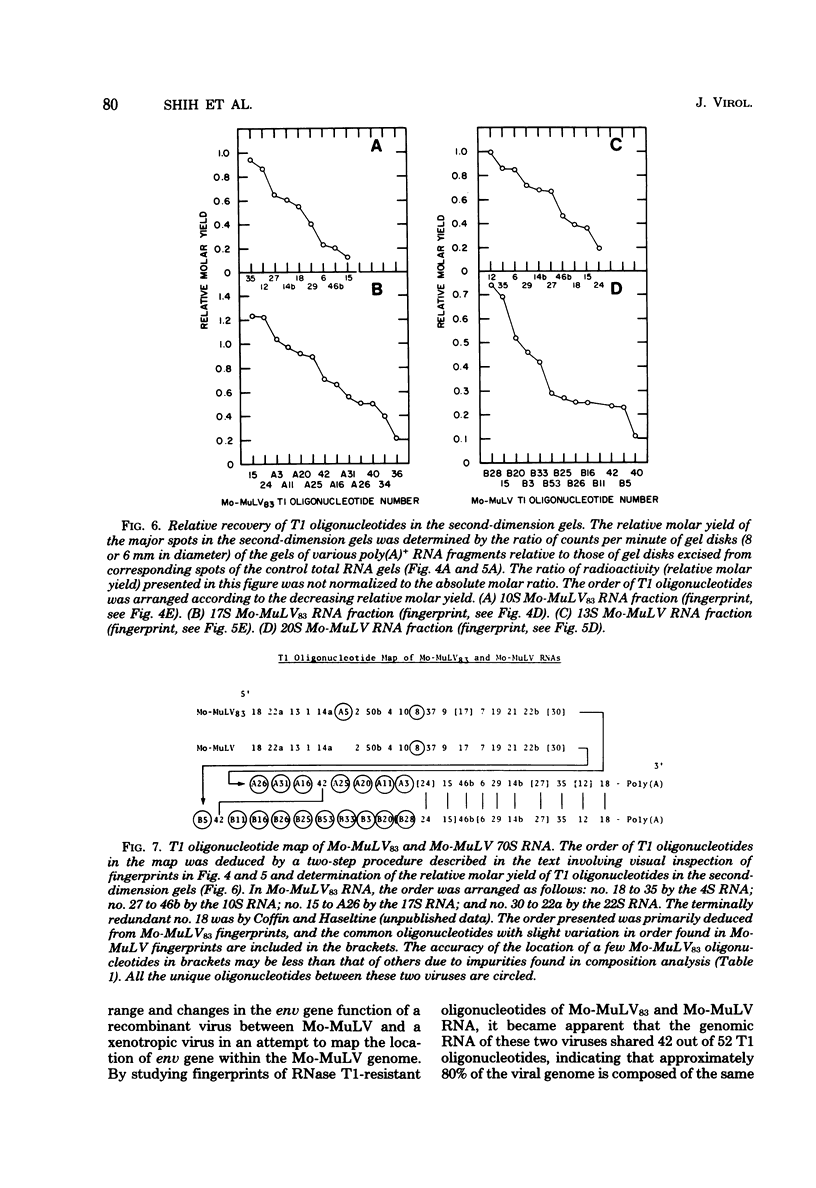
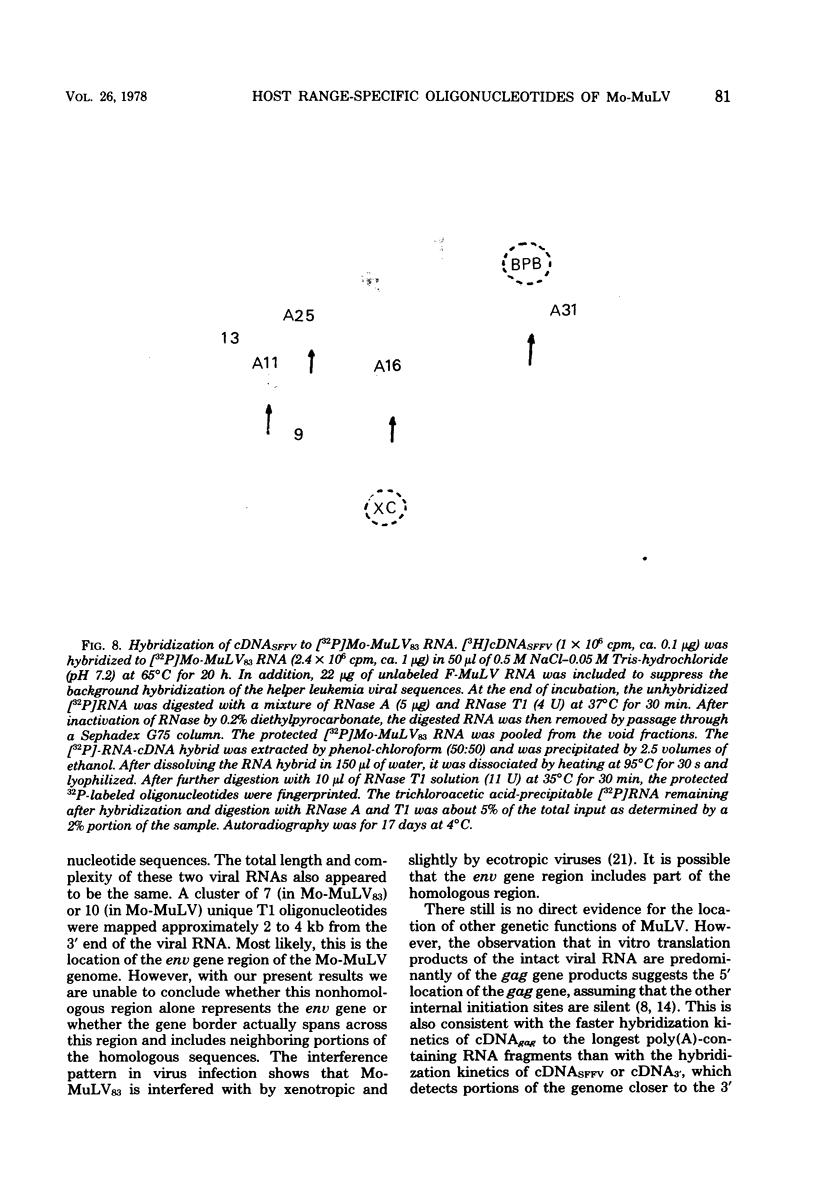
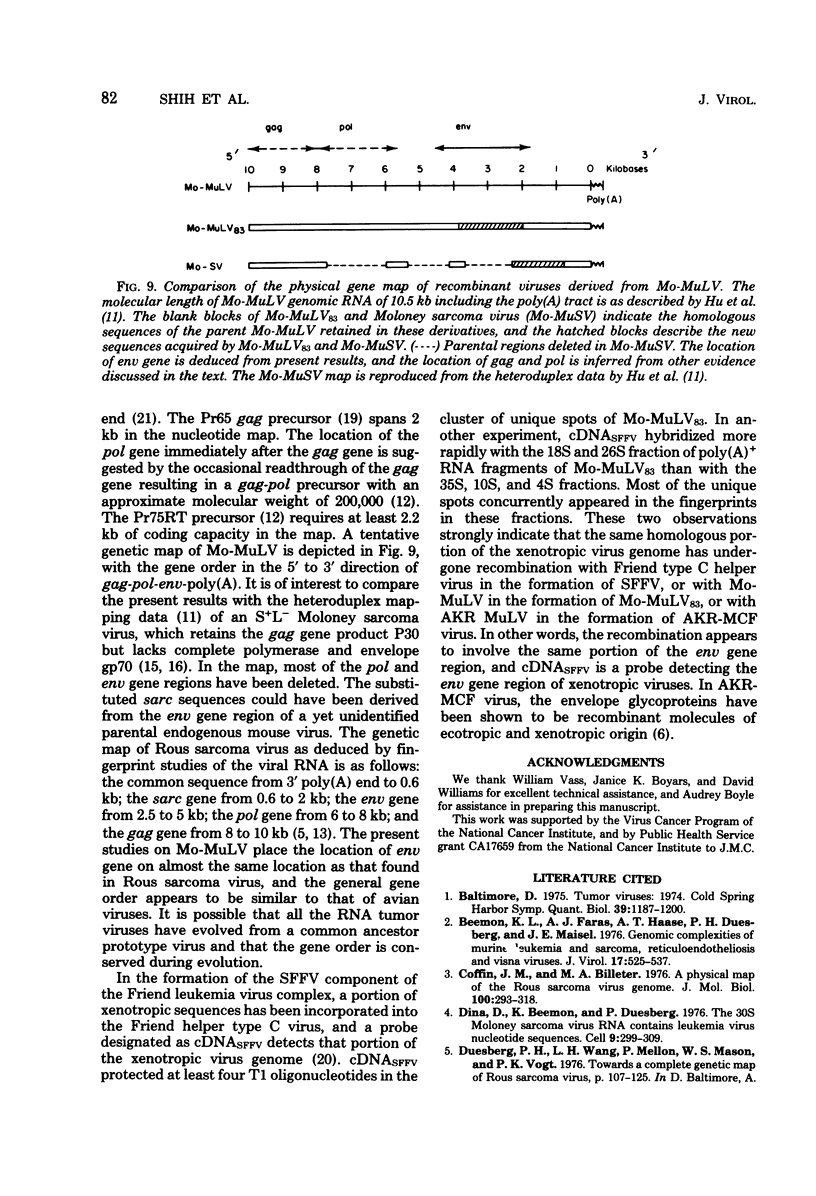
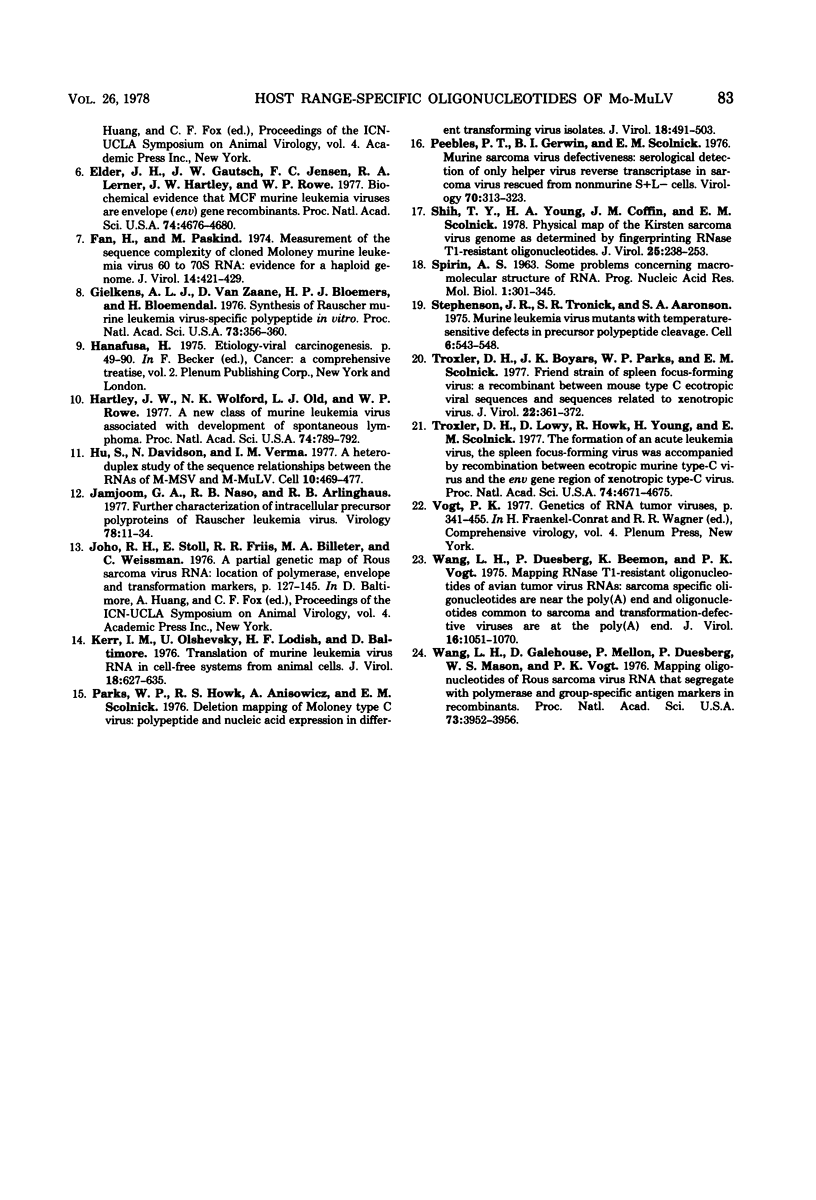
Images in this article
Selected References
These references are in PubMed. This may not be the complete list of references from this article.
- Baltimore D. Tumor viruses: 1974. Cold Spring Harb Symp Quant Biol. 1975;39(Pt 2):1187–1200. doi: 10.1101/sqb.1974.039.01.137. [DOI] [PubMed] [Google Scholar]
- Beemon K. L., Faras A. J., Hasse A. T., Duesberg P. H., Maisel J. E. Genomic complexities of murine leukemia and sarcoma, reticuloendotheliosis, and visna viruses. J Virol. 1976 Feb;17(2):525–537. doi: 10.1128/jvi.17.2.525-537.1976. [DOI] [PMC free article] [PubMed] [Google Scholar]
- Coffin J. M., Billeter M. A. A physical map of the Rous sarcoma virus genome. J Mol Biol. 1976 Jan 25;100(3):293–318. doi: 10.1016/s0022-2836(76)80065-4. [DOI] [PubMed] [Google Scholar]
- Dina D., Beemon K., Duesberg P. The 30S Moloney sarcoma virus RNA contains leukemia virus nucleotide sequences. Cell. 1976 Oct;9(2):299–309. doi: 10.1016/0092-8674(76)90120-3. [DOI] [PubMed] [Google Scholar]
- Elder J. H., Gautsch J. W., Jensen F. C., Lerner R. A., Hartley J. W., Rowe W. P. Biochemical evidence that MCF murine leukemia viruses are envelope (env) gene recombinants. Proc Natl Acad Sci U S A. 1977 Oct;74(10):4676–4680. doi: 10.1073/pnas.74.10.4676. [DOI] [PMC free article] [PubMed] [Google Scholar]
- Gielkens A. L., Van Zaane D., Bloemers H. P., Bloemendal H. Synthesis of Rauscher murine leukemia virus-specific polypeptides in vitro. Proc Natl Acad Sci U S A. 1976 Feb;73(2):356–360. doi: 10.1073/pnas.73.2.356. [DOI] [PMC free article] [PubMed] [Google Scholar]
- Kerr I. M., Olshevsky U., Lodish H. F., Baltimore D. Translation of murine leukemia virus RNA in cell-free systems from animal cells. J Virol. 1976 May;18(2):627–635. doi: 10.1128/jvi.18.2.627-635.1976. [DOI] [PMC free article] [PubMed] [Google Scholar]
- Peebles P. T., Gerwin B. I., Scolnick E. M. Murine sarcoma virus defectiveness: serological detection of only helper virus reverse transcriptase in sarcoma virus rescued from nonmurine S + L-cells. Virology. 1976 Apr;70(2):313–323. doi: 10.1016/0042-6822(76)90274-9. [DOI] [PubMed] [Google Scholar]
- Troxler D. H., Boyars J. K., Parks W. P., Scolnick E. M. Friend strain of spleen focus-forming virus: a recombinant between mouse type C ecotropic viral sequences and sequences related to xenotropic virus. J Virol. 1977 May;22(2):361–372. doi: 10.1128/jvi.22.2.361-372.1977. [DOI] [PMC free article] [PubMed] [Google Scholar]
- Troxler D. H., Lowy D., Howk R., Young H., Scolnick E. M. Friend strain of spleen focus-forming virus is a recombinant between ecotropic murine type C virus and the env gene region of xenotropic type C virus. Proc Natl Acad Sci U S A. 1977 Oct;74(10):4671–4675. doi: 10.1073/pnas.74.10.4671. [DOI] [PMC free article] [PubMed] [Google Scholar]
- Wang L. H., Duesberg P., Beemon K., Vogt P. K. Mapping RNase T1-resistant oligonucleotides of avian tumor virus RNAs: sarcoma-specific oligonucleotides are near the poly(A) end and oligonucleotides common to sarcoma and transformation-defective viruses are at the poly(A) end. J Virol. 1975 Oct;16(4):1051–1070. doi: 10.1128/jvi.16.4.1051-1070.1975. [DOI] [PMC free article] [PubMed] [Google Scholar]
- Wang L., Galehouse D., Mellon P., Duesberg P., Mason W. S., Vogt P. K. Mapping oligonucleotides of Rous sarcoma virus RNA that segregate with polymerase and group-specific antigen markers in recombinants. Proc Natl Acad Sci U S A. 1976 Nov;73(11):3952–3956. doi: 10.1073/pnas.73.11.3952. [DOI] [PMC free article] [PubMed] [Google Scholar]



